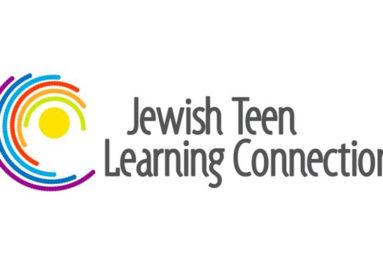
We truly believe that sending children to Jewish day school is the most important decision a family can make.
In 2019, the Bess and Paul Sigel Hebrew Academy of Greater Hartford and the Hebrew High School of New England merged to create K-12 Orthodox Jewish day school in West Hartford. The merged school, renamed the New England Jewish Academy (NEJA), serves students in the Greater Hartford, Greater New Haven, and Greater Springfield communities .
Thanks to the vision and generosity of community leaders Ann and Jeremy Pava, New England Jewish Academy now offers a transformative, subsidized tuition program, The Pava Tuition Initiative, for all students from kindergarten through twelfth grade.
The following is an excerpt of a recent interview with Ann Pava, conducted by Prizmah–The Center for Jewish Day Schools. Ann Pava is immediate past board chair of Prizmah.
Tell us about the factors that led to the merger that created NEJA ?
To be quite honest, our interest was initially in the Hebrew High School of New England.. We were founders of the high school 20 years ago (the first coed Jewish high school between Boston and New York). We watched it grow from 18 students in the first year to more than 80 students by year 10, with the promise of continued growth.
And then the economy tanked, the demographics began to change and the school began to shrink. The high school’s six elementary feeder schools also began to shrink, and one of its largest feeder schools, Heritage Academy (in Longmeadow, Massachusetts, where my children went) closed. We worried that the high school would become too small to be attractive to teens and began to look at creative ways to turn around the decline in enrollment.
The Hebrew Academy (located in the same area) had also gotten smaller. They were in an old, costly building in a town that was no longer convenient to the Jewish community. The Academy believed they needed to move into a state-of-the-art building in a better location to be able to attract new families and to retain current ones.
At the same time, West Hartford’s modern Orthodox community was growing, in leaps and bounds. There were many, many young families with children in the pipeline for a K-12 day school education. Families moved to the community for both schools, even though their children were not yet of school age.
The leadership of both schools recognized a win-win opportunity to grow. The high school had a beautiful new building on a campus in the heart of the Jewish community that could accommodate the Hebrew Academy. Both schools embraced the idea of bringing all their families (current and future), faculty and board members under one roof. And most exciting was the opportunity to give everyone in the day school community an opportunity to build a new, fantastic K-12 school together. This merger had all the right elements to create something new and exciting, to rally the entire community, and to maximize the resources of both schools.
Jeremy and I thought the idea was brilliant and supported it 100%. And, we were thrilled that the Greater Hartford Jewish community, through the Federation and the Jewish Community Foundation, supported the merger process with significant funding to ensure a smooth merger.
What are the goals or objectives of the Pava Tuition Initiative?
We truly believe that sending children to Jewish day school is the most important decision a family can make. We know that day schools immerse entire families in exploring our tradition and sacred values and enable a knowledge and understanding of Judaism that can never be replicated anywhere. Our hope (goal) was that this gift would help the school to grow enrollment by making tuition affordable and accessible to a broader range of families while also ensuring that our school provides an academic program of the highest quality.
There is something that has happened as a result of the tuition subsidy that I believe from a Jewish perspective is the most important. We are taught that the highest form of tzedakah is when the gift is given in a way that allows the recipient to maintain the utmost dignity. No matter how gracious, welcoming and confidential a scholarship committee may be, we know that applying for day school scholarship can be a very demoralizing and embarrassing experience. With this subsidy, new families applying to the school feel like mentshes. Many current families were able to go off scholarship and avoid the process as well. Almost every family in the school made a significant donation to the school in gratitude and were thrilled with the ability to give back.
Nearly everyone who enters the New England Jewish Academy does so on equal footing, with their heads held high. As a result of a new, more affordable tuition level, the atmosphere has changed to one of pride and dignity for all the families. This was not really an original goal, but it is the result we are most grateful for.
What is the relationship between affordability and excellence?
I think schools need to be both affordable and excellent. You simply can’t have one without the other and expect to maintain or grow your enrollment. I also think excellence is an important differentiator when a day school is competing with a free public school. I believe that one of the mistakes we make in marketing ourselves is forgetting to include the value of a Jewish education, a values-based education, and an education that embraces an entire family. That is something that you will never get in public school or in a fancy private school. I think we focus too much on which Ivy League schools our graduates are attending. No matter where they go to school, smart kids will get into the top colleges. It’s the values and sense of community they get from a Jewish day school education that will make them better human beings once they’re there.
What data convinced you to launch this initiative?
The biggest piece of data that drove our decision to offer our school a tuition-incentive program came from the 2017 Nishma Research Profile of American Modern Orthodox Jews. The report had nearly 4,000 respondents. What stood out for us is that the number one issue of concern in the modern Orthodox community (89%) was the cost of Jewish day school education.
That number certainly reflected the reality we were seeing as people we thought would be coming to the school chose public school instead. When my kids were little, there was no question that we and our friends in the modern Orthodox community would send our children to Jewish day school, no matter what it cost. (Of course, it was relatively more affordable 20 years ago!) My mother-in-law once told me that she and my father-in-law and a whole group of families in their day school took a second mortgage out on their homes (when Jeremy was little) to help the day school! But, it’s a different world today. Day schools are much more expensive, college is prohibitively expensive and young parents are looking for other (less expensive) ways to supplement their children’s Jewish education and connection to the Jewish community.
We began to research tuition models that might work here in our community. Jeremy and I were very inspired by two of our friends from Prizmah, Joel Segal from Montreal and Paula Gottesman from Metrowest, New Jersey. Both of them spearheaded and implemented tuition incentive programs in their communities that were very successful. Although both of their communities were much larger than ours, we were able, with the help of Prizmah’s Dan Perla and in partnership with our school’s leadership, to take pieces of each of those programs and create a plan tailored to West Hartford.
Tell us about the early results of the program.
Since enrollment opened under Covid, early results are difficult to gauge. Nevertheless, the tuition initiative brought 13 new families and three returning families. Thanks to the lower tuition, we have had a 22% decline in the number of families on scholarship and a 26% decline in financial aid dollars awarded. And parents are so grateful for the lower tuition.
Is there a point at which the program will be self-sustaining?
I believe that the school will always need philanthropic support. But if this initiative spurs more enrollment growth, they will need a lot less of it!
This article is an excerpt of an interview with Ann Pava by Prizma, and is reprinted with permission. It has been edited for space considerations.








 Southern New England Jewish Ledger
Southern New England Jewish Ledger










